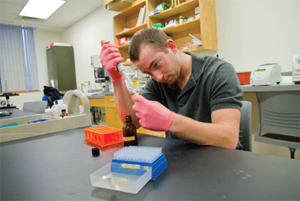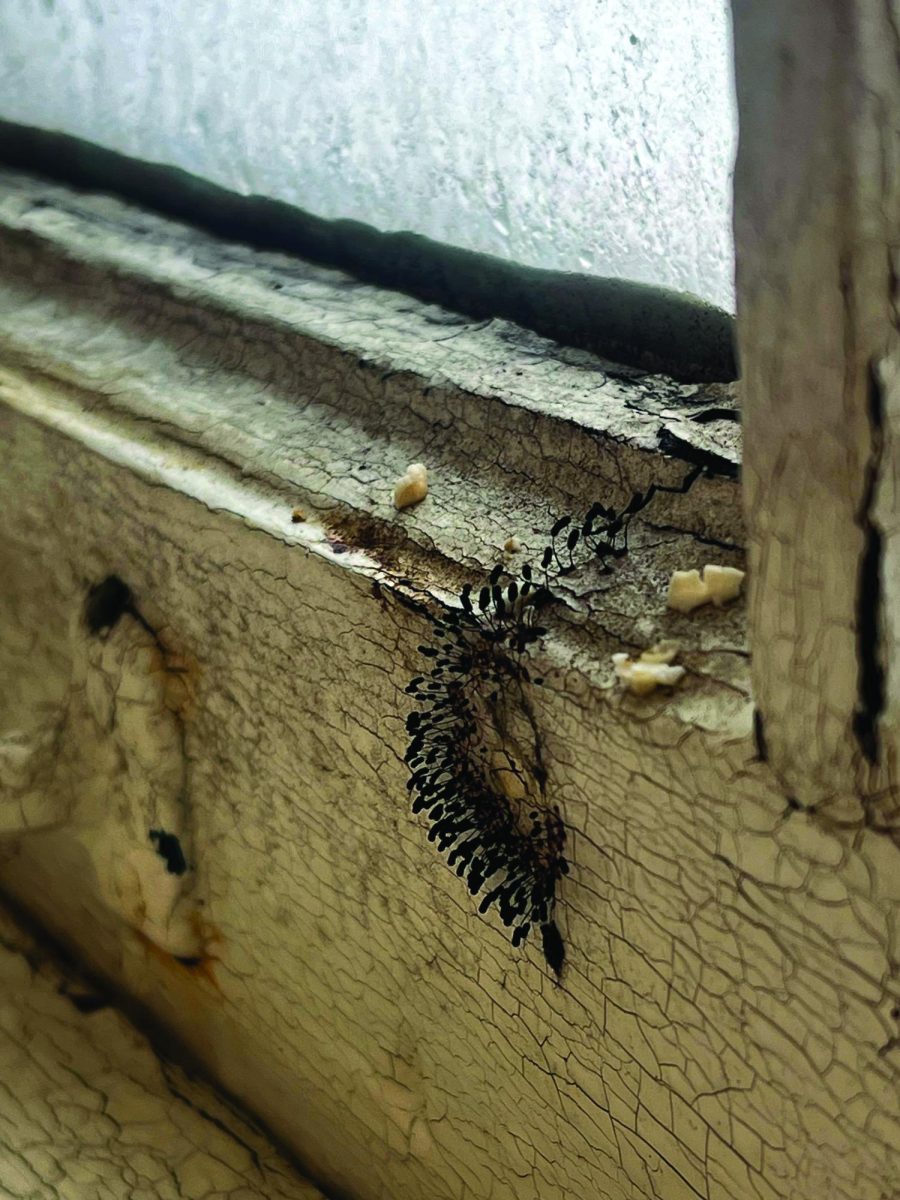By CHELSEA FLEISCHMAN
News Co-Editor
[email protected]
The Campus spoke with six comping seniors who have needed to draw upon funds or use their own money for the completion of their senior projects. For these students, values ranged from $20-30 out of pocket to over $1,200.
Sam Moritz
English Major, Political Science Minor
Moritz chose to comp on his own Jewish heritage and is comparing two contemporary works by Jewish author Michael Chabon. He said that one text explores Jewish prominence in the comic book industry while the other looks at Zionism, the Jewish search for the homeland.
“I’m a Jew, so I wanted to pick something that I really enjoy learning about,” he said.
Mortiz said that the only money he spent on his comp was in purchasing the two novels. He could have rented them but he wanted to buy them.
“The online databases have been really helpful and whether it’s requesting things through EZ Borrow or Illiad to try and retrieve other scholarly articles, I’ve been very successful,” he said.

History Major, Communication Arts Minor
Benner was interested in comping on the post-colonialist time period. She is comparing two different newspapers, The London Times and Lloyd’s Weekly, based on content and news from the British colonies and their empire. She was interested in finding if there was a difference in class identity as it is influenced by the empire.
Because Benner is comparing the papers from both 1892 and 1899, she was unable to obtain hard copies. She was able to ship some microfilms from Purdue University, but the New York City Public Library was the closest place she could travel to in order to continue her research.
She received $67 from the History Department senior project fund, and another $183 from the Class of 1939 Senior Research Fund, which she applied to through the Dean of Students’ Office.
In a four-day trip to New York City, she spent just $100 in room and board by staying in a former sorority sister’s apartment complex, and nearly $100 in microfilm copies. She said that she didn’t quite spend all of the money from the history department, but that she did spend her own $20-30.
She said that without the funding, she would have needed to choose a different primary resource.
“If it had gotten down to it, I think that I probably still would have tried and spent my own money to go look at the Times because it ended up being the perfect newspaper to use for [my comp],” she said. “There was just no way that I was going to get a quality newspaper to be sent here or to find one anywhere else.”

Studio Art Major, Double Minor in Creative Writing and Psychology
Inspired by her fascination of animals and the natural world, Reynolds has currently finished 20 paintings, each of a different species. She hopes to double that number in the second half of the semester.
Reynolds said that each art student is allotted $133 from the Art Department, and that she applied and received another $175 from the Kleeman Fund, another fund open to all studio art majors.
She said that she’s spent at least $400 so far. She estimates that she will spend another $150 before she has finished the comp. She has to cover all expenditures not covered by the two art department funds.
“In retrospect, I should have asked for more, but hindsight is 20-20,” she said.
Reynolds also works in the campus art store, so she is familiar with material costs. To save money, she’s ordered some supplies from Web sites at less expensive, bulk prices.
“I’m lucky in that my parents are willing to help out with the cost and I’ve always received money from the Kleeman Fund when I asked for it,” she said. “But not everybody is in that same situation. For me, I think about how much it’s going to cost, and I cringe, but I can’t not paint.”

Biology Major, Spanish Minor
Bruce, a pre-med student, is comping on the underlying genetic causes of retinal degeneration.
He said that he has spent about $650 on his senior project, though none of it was out of pocket.
Each student in the Biology Department is allotted $200 but can spend as much as $500, according to biology professor Glen Wurst.
“If you spent $200 and somebody else needs $800, it’s not like it’s a wash,” he said. “We can’t just spend one person’s money on somebody else. So if you need $800, you get $500 from the department and apply for the other $300 from the dean.”
Bruce said that he relied on much of the department’s existing equipment to carry out his experiments on approximately 200 mice.
“That’s why they make us do the proposals before we actually do the project, so we have an idea for how much we’re going to spend,” he said. “But inevitably there’s hiccups. What happens is people end up spending more money.”
Andrew Kaye
Art and Technology Major, Biology Minor
Kaye completed his senior project, “Light, Form, Space” in the fall semester and graduated a semester early. He used LED lights and programmed controllers to shift colors and brightnesses to create an intense perceptual experience.
“The experience created was meant to challenge human perception, to allow the viewer to imagine and think they knew what they were seeing was real,” he said in an e-mail.
Kaye knew from the beginning that his comp would be very expensive because at the time, it wasn’t something that was a part of the art department. He then had to purchase all necessary supplies himself.
He received $300 from the Kleeman Art Department fund. He estimates that he spent more than $1,500 over the course of the semester, but that he is still able to use many of the tools and components in his personal work.
Any student that submits art to the gallery can choose to put a price tag on it.
Kaye listed his work as three separate pieces. Two were priced at $600, and one at $1000. He didn’t sell any then, but said he has since reconfigured and prepped them for a show in Chicago.
He said that he had originally budgeted for a $700 comp.
“As I soon realized that I would be spending much more than $700, I did not want money to limit my creativity,” he said. “Sure, I could have done a comp with LED lights for $700, but I wanted to create what I envisioned…I couldn’t let money hold me back.”
Evan Thomas Woods
Philosophy Major, Double Minor in Religious Studies and History
Woods is comping on the philosophy of mathematics of language. He was inspired by a study abroad course that he took on German mathematician and logician Gottlob Frege and the work of Julius Caesar.
“I’m really interested in the philosophy of his time period and the philosophy that his work has influenced, and I plan to go to grad school in philosophy, so working in this area seemed pretty natural,” he said.
Woods said that so far he has referenced 23 books, many of which he got through an interlibrary loan.
He relied on Rutgers University, Carnegie Mellon University, and the University of Pittsburgh for book sources.
“I like owning books, so I was not too put out by buying them.”
Woods said that he was not aware of any available funds or grants.



